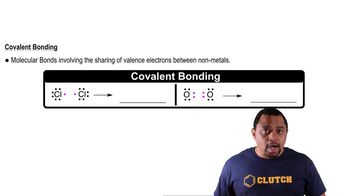Here are the essential concepts you must grasp in order to answer the question correctly.
Lewis Structures
Lewis structures are diagrams that represent the bonding between atoms and the lone pairs of electrons in a molecule. They use dots to show valence electrons and lines to indicate bonds. Understanding Lewis structures is essential for predicting molecular geometry and reactivity, as they provide insight into how atoms are connected and the distribution of electrons.
Recommended video:
Lewis Dot Structures: Ions
Group Trends in the Periodic Table
Elements in the same group of the periodic table exhibit similar chemical properties due to having the same number of valence electrons. For fourth-row elements, this includes elements like gallium, germanium, and arsenic. Recognizing these trends helps in predicting how an unknown element, represented as X in the question, might behave in chemical reactions, especially when forming compounds with halogens like bromine.
Recommended video:
Periodic Table: Group Names
Covalent Bonding
Covalent bonding occurs when two atoms share one or more pairs of electrons, typically between nonmetals. In the context of the question, the unknown element X is likely forming covalent bonds with bromine atoms. Understanding covalent bonding is crucial for determining the molecular structure and properties of the resulting compounds, as it influences bond angles, lengths, and overall molecular geometry.
Recommended video:




